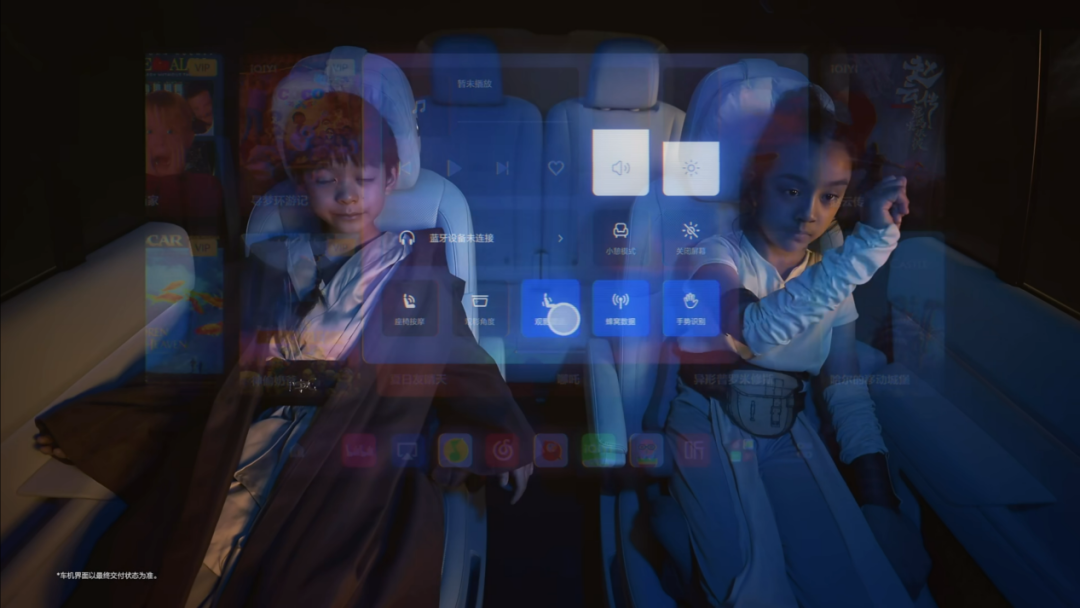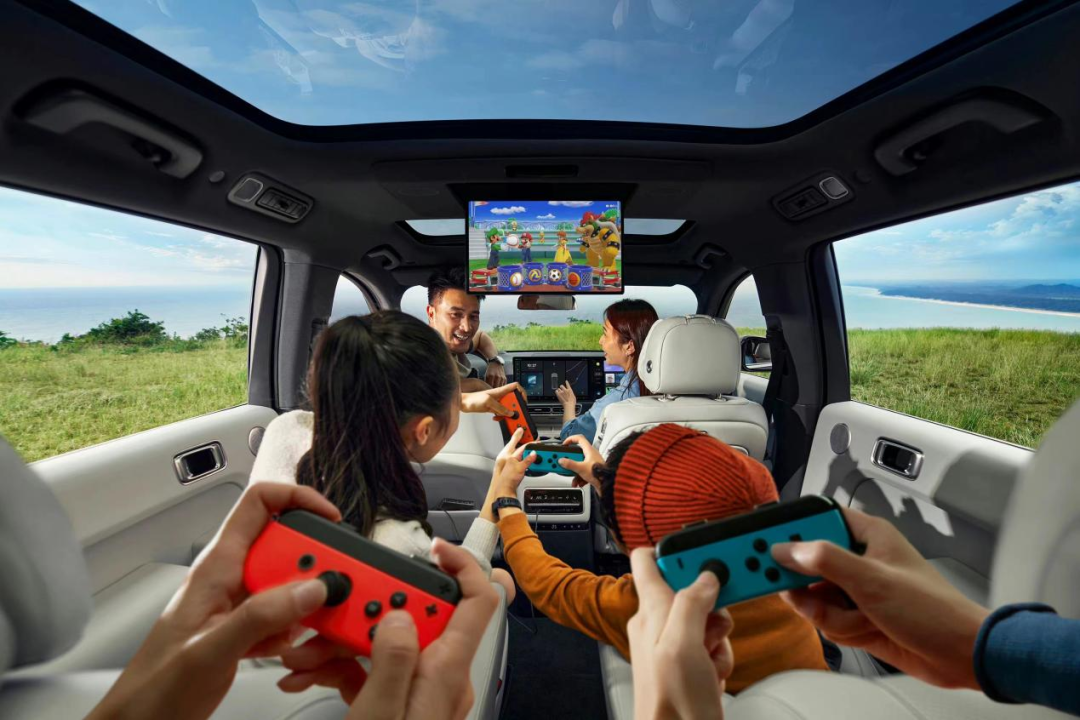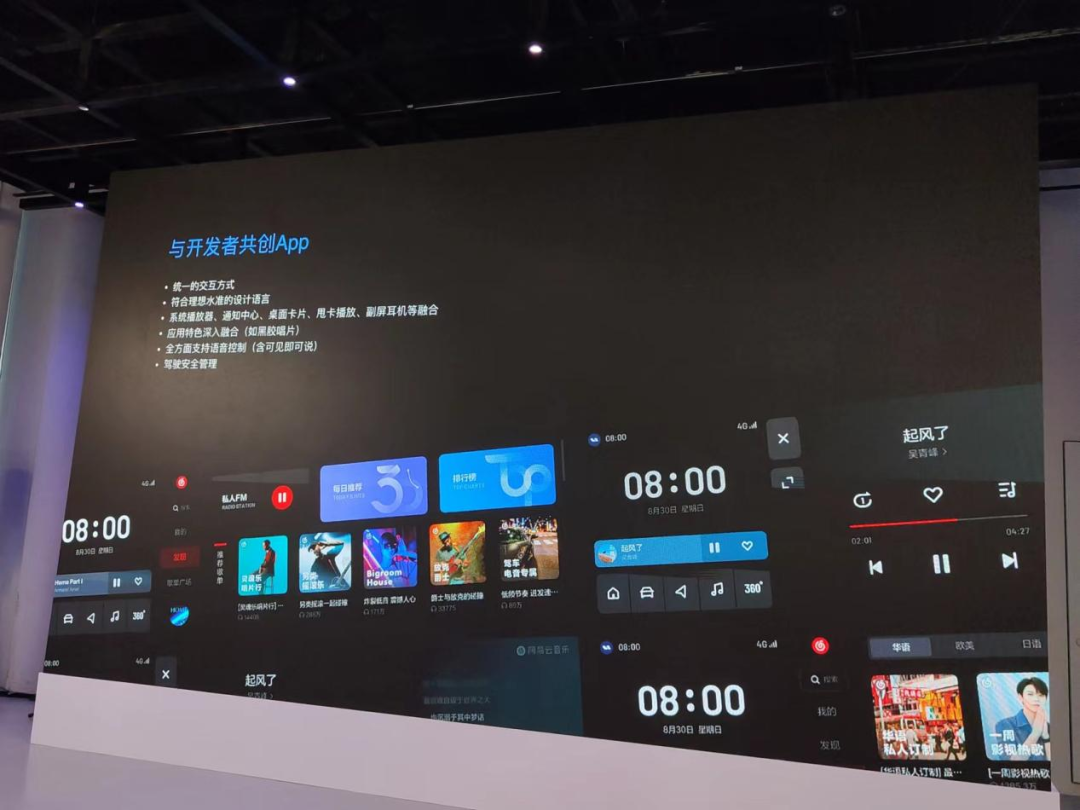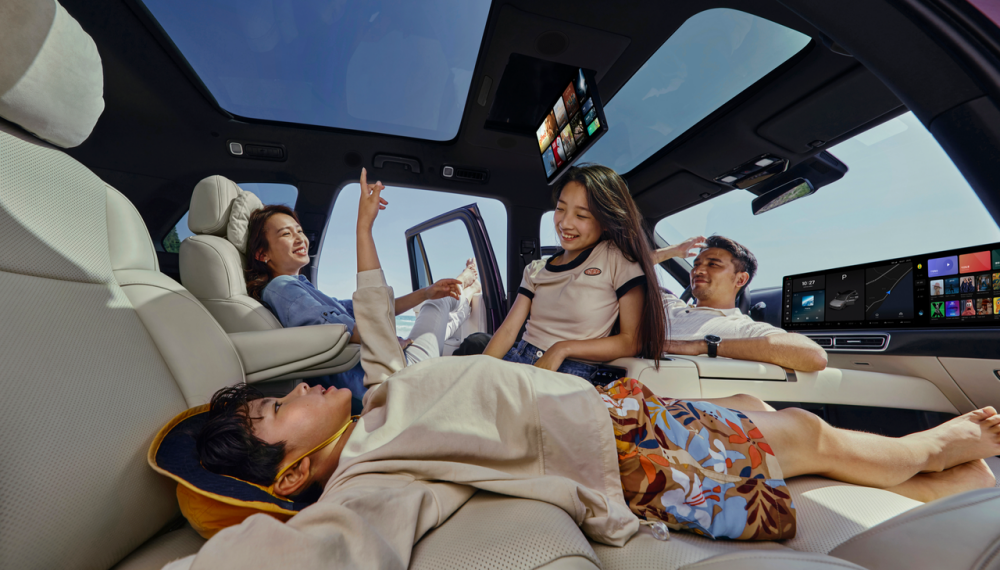Author: Mr.Yu
In 2022, besides “Metaverse”, the most frequently used buzzwords in the industry are probably “scene-based” and “the third space”.
What exactly is the third space? How do we define it? If you ask a thousand practitioners these questions, you may get more than a thousand answers. Or, from the very beginning, there may not be a standard answer.
Can rich and loosely-configured hardware be equated with scene-based approach? Where will the scene-based approach take the cockpit?
In a commercial survey conducted in the summer of 2022 targeting professional users, several satisfied ONE car owners left a deep impression on us and gave us a breakthrough point for contemplation. Now, targeting the needs of the household users, the ideal L9, which takes the scene-based approach to the extreme, presents a possibility.
On a busy workday before the Spring Festival, we had the privilege of interviewing several members of the Ideal Intelligence Cabin team to uncover our own doubts and see the trend of evolution.

Understanding Scene-based Approach > Stacked Functions
People’s expectations for vehicles as products and commodities are no longer limited to driving. On the other hand, audio entertainment functions, which were monopolized by storage media such as cassette tapes, CDs, and USB drives for many years, were quickly replaced by smartphones and Bluetooth connections.
The demand for intelligentization from users has become increasingly clear, which is beyond doubt. According to IHS Markit’s research results, the degree of technology configuration of intelligent cabins has become the second largest key factor influencing Chinese car users’ purchasing decisions, after safety configuration, and the importance has exceeded traditional key factors such as power, space, and price.
At the same time, nearly half of Chinese consumers have shown a clear interest in VR games, high-definition movies, K-song software, seat massage, and other services, and are willing to pay a reasonable price; more than 70% of users recognize the value of intelligent cabin configuration, believing that it greatly increases their interest in purchasing cars, and nearly 20% of users consider it a must-have configuration.
 Industry speaks with products, and the market speaks with sales. How to package entertainment, recreation, office and other scenarios to explain the concrete value of “scenario-based” has almost become a necessary skill for car companies to promote in 2022.
Industry speaks with products, and the market speaks with sales. How to package entertainment, recreation, office and other scenarios to explain the concrete value of “scenario-based” has almost become a necessary skill for car companies to promote in 2022.
Looking back from the beginning of 2023, the Ideal ONE, known as the “daddy car”, has been well-known in the market.
In the face of the Ideal L9, which became popular again in 2022, many people on social media believe that the car refrigerator, rear entertainment screen, and small table are not new features in the luxury business car models. The scenario is nothing but a gimmick for the Ideal L9 model, which continues to target family car market.
If that’s the case, why wasn’t the concept of scenario-based design proposed when bosses enjoyed chilled champagne and the symphony from the speakers that seemed to be taken to the Golden Hall in Vienna on their luxury cars?
The demand for scenarios has existed for a long time. For example, taking children out is always a headache for most young parents.
A traditional car user expressed in an interview that the storage space in his car has been filled with children’s things. For him, the “endurance” of children in the car determines the distance of family travel. This “endurance capacity” includes not only basic necessities such as milk powder, diapers, and hot water in insulated cups, but also audio content, such as children’s songs, audio books, and animated content, to attract attention and expend energy, support the installation of ISOFIX interface for child safety seats, and provide basic elements such as heated seats and ventilated seats in cold and warm environments to maintain comfort.
These are not sentimental but real pain points.
Cars and travel are already a part of life and an extension of family scenarios. The service of users through product settings has not changed, but the object of service has changed from enterprise bosses and executives to family members and users themselves.
Let the data speak. According to long-term research on the Ideal ONE car owner group and more car users, the Ideal cockpit team found that the demand for family scenarios among car users has strong continuity. Further analysis shows that this is the manifestation that the overall living standards of the people have significantly improved as compared to before. Therefore, many demands have also extended beyond family scenarios.

Only a small portion of these demands have been systematically addressed by the industry.
As a brand and model oriented towards households, it is crucial to listen to and accommodate the voices of customers.
The existence of a mini fridge is not limited to providing a cool environment for fine wines. The dual-purpose mini fridge in the Ideal L9 can provide an optimal temperature for mixing formula and maximize the emotional value of cold beverages during sweltering summer days. Additionally, the foldable small table behind the front passenger seat offers necessary space for mixing formula and other similar operations.
The foldable storage entertainment screen in the rear cabin and the mid-air gesture recognition method are not novel in the automotive industry. However, the Ideal L9 is the first product to use 3D ToF gesture recognition on the rear cabin entertainment screen. This unconventional method has a highly practical reason behind it:
Although the Ideal L9’s six-position sound recognition can precisely locate the command initiator and quickly execute the command, voice recognition is not convenient for randomly selecting streaming content or performing content-control actions while playing. Moreover, performance and fatigue issues aside, getting up frequently to touch the screen during driving is not a safe option.
A remote control might seem like a good idea, but compared to other more advanced forms of interaction in the car, it is a rather foolish option. On one hand, there is always the risk of losing it. On the other hand, the remote control’s large amount of infrequently used buttons not only affect the external devices’ volume, but also do not function well in environments with frequent light changes or when the car is in motion.
The premise of this straightforward logic is that users of all ages can master 3D ToF gesture control through simple learning and reasonable interaction guidance.
For a long time, the burden of the entire car’s interaction has been placed solely on the driver. The driver is not only responsible for driving, but also for playing the role of processing the car’s interaction demands. If it cannot be said to be overwhelming, it can at least be viewed as a major disturbance.On the Idealland L9, we see new possibilities.
Starting from scenarios, the most important element to consider, of course, is people from every aspect. Innovative interactive methods, such as 3D ToF gestures or independent audio zones in the front and rear rows that are integrated, not only bring users a strong sense of novelty and deep impression, but also greatly reduce the usage threshold, making it possible for everyone to operate skillfully.
The team members of the Ideal Intelligent Cockpit who were interviewed said that, considering the different language habits between children and adults, Ideal Companion has made targeted solutions for children’s voice, diacritics, and age-specific oral expressions. Combined with the vehicle’s three rows of independent audio zones, the needs of young passengers can also be met smoothly – just like being at home.

The members of the Ideal Intelligent Cockpit team believe that bringing more convenience to young family members ultimately solves the pain points of parents.
The magnificent hardware configuration, including the 3K-resolution car-grade OLED rear entertainment screen, 21 speakers in a matrix, an amplifier with a maximum power of 2160W, which is the highest level in the original sound system of the vehicle, a 7.3.4 panoramic sound layout, and a 4D immersive audio and video system, provides the foundation for more scenarios. Whether holding a Nintendo Switch’s iconic red and blue joystick to play games with the children on the rear entertainment screen, or singing together in the cockpit that turns into a karaoke room, as time elapses and user groups expand, the inspiration for more scenarios for the industry comes from user requirements themselves.

Hardware configuration appears in the intelligent cockpit and is then included in the intelligent interaction system of the central control, language, and gestures, thus providing a complete answer.
Getting on the car is just the beginning, and continuous optimization is the main theme. When users have requirements like “I want to reach for the ice-cold Coke in the thermos more conveniently,” the Ideal team will still try to meet it by adding an upgrade that opens the thermos with voice in the next OTA version.This is an unprecedented technological equality from inside the car cabin.
The user, not the product manager, is the object that satisfies value.
How to “differentiate true from false” in the process of planning and implementing requirements and how to bring as much value as possible to users are goals that every practitioner strives to achieve.
We can see one path from the ideal attitude towards the in-car app ecosystem.
In terms of experience details polishing, Ideal has always been commendable, and no one with some knowledge will object to it.
Taking the interaction of in-car applications as an example, third-party applications in the Ideal in-car system are refactored and presented in a unified interactive manner with a UI/UX design language of Ideal standards. On the other hand, while retaining the unique features and resources, each application is deeply integrated with the intelligent cockpit, forming a complete experience system with interaction methods and rules such as visible speech and driving safety management. This is particularly prominent in content-type applications.
The Ideal team’s idea is relatively simple and practical: a more unified experience and a lower learning cost are more friendly to everyone.

This effect comes from the working mode of “co-creating apps with developers”. Abandoning the “follow the trend” mode of adapting universal solutions from suppliers, Ideal’s team will work more closely with cooperative developers to develop versions rooted in their own systems. Subsequently, based on user feedback in operation, it is continuously polished and optimized to form unified experience while maintaining the standards.
To paraphrase a joke from a friend who is close to the Ideal car: The experience is really good, but it’s a bit expensive for suppliers.
In the process of rushing towards the upward curve of delivery volume, the “four-step” methodology of Ideal plays an irreplaceable role:
Step 1, clarify who the user is and what their real needs are;
Step 2, clarify the company’s own needs as an enterprise;
Step 3, set challenging and strategic goals;
Step 4, define the key results of the goals and carry out the work.
As the overall delivery volume continues to rise, getting closer to real users means that more diverse and fragmented information will form pressure on the product team.## Translation
Focusing on details, professional users in the beta testing team have greatly helped the team through the process of rapid product iteration.
Even during the testing phase, feedback from users about the vehicle instrument panel, such as a character being too small or another user thinking it is not necessary, after careful analysis, could still become a crucial factor for making the decision of “removing” it before the official release.
Similar to the part responsible for rational thinking in the human brain, ideal automobile’s organizational structure also includes a specific team for data analysis. Whether it is macro big-data analysis or anonymous data simulation in typical scenarios, discussion featuring thoughts and opinions that utilize data, facts, methodology, and a demand audit process, have long become the underlying logic of the Ideal Automobile team.
Processes can be learned and practices can be improved, but values are the most difficult to learn and imitate.
Members of the Ideal Intelligent Cockpit team that were interviewed expressed that “Product managers’ thinking could be inertial or consist of subjective judgments, speculation or even vanity. Only when the perspective is from the user and when it is from the car buying and car usage standpoint, and when they are willing to spend costs to obtain it, can it bring genuine and meaningful user value.”
The underlying logic within this is very simplistic: “Focus on the value brought to users, not satisfy the value of the Product Manager.”
Conclusion
In the process of analyzing the scenario of the cockpit, I thought of a story from a long time ago:
As a pure customer, I communicated with a friend who owns a restaurant about some of the shortcomings of the current menu, such as clear optimization space in the beauty of presentation and efficiency of information transmission. Two weeks later, when I revisited the restaurant, I received a completely new version of the menu that was “iterated.” The new menu is beautifully designed and has clear content.
I am happy that my opinions are valued. As a business owner, my friend also gained respect through his swift and firm actions.
In an era where the pathways for obtaining information are becoming increasingly flattened, Chinese users’ maturity is no longer influenced by marketing methods that were once effective. They will establish their own recognition and make their own choices in their own way, and even influence the development of the industry.
 It’s not just entertainment or parenting, but also recreation and work. The scene has always been there, and the needs have always been there. The ideas of practitioners have always been there. What truly deserves praise is the group of people who bravely practice from 0 to 1.
It’s not just entertainment or parenting, but also recreation and work. The scene has always been there, and the needs have always been there. The ideas of practitioners have always been there. What truly deserves praise is the group of people who bravely practice from 0 to 1.
By listening to and understanding users’ demands more, letting the understanding of intelligence and scene orientation rather than hardware to dominate the experience, we believe that the industry will soon realize the value of it and then practice it in its own way.
Compared with the value achieved between users and businesses, it may not be so important to define “Third Space” specifically and how to define it.
This article is a translation by ChatGPT of a Chinese report from 42HOW. If you have any questions about it, please email bd@42how.com.
